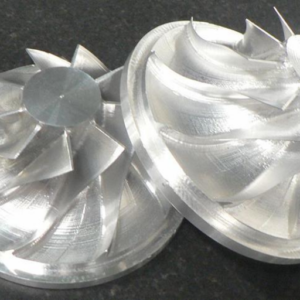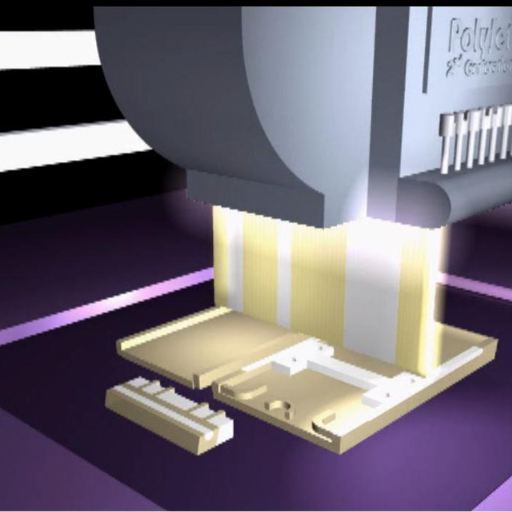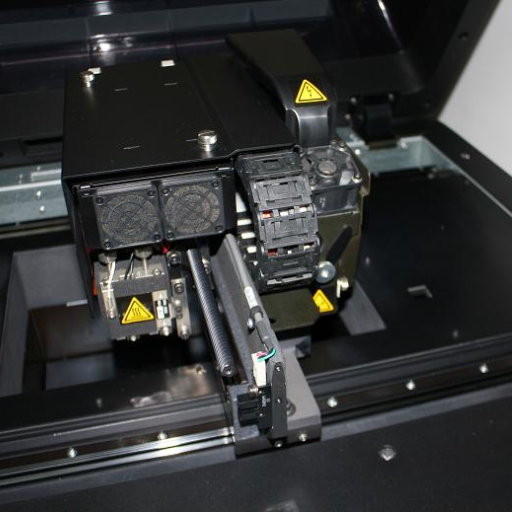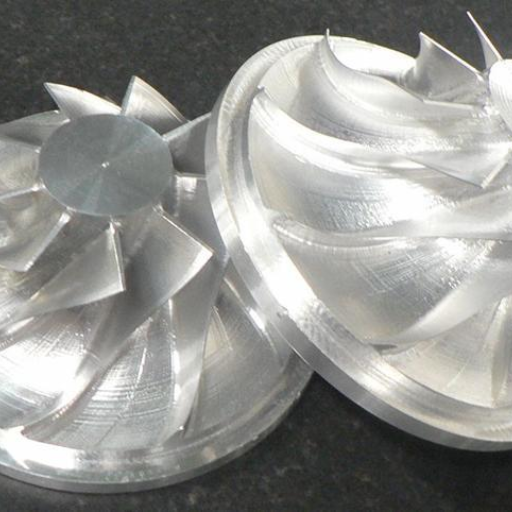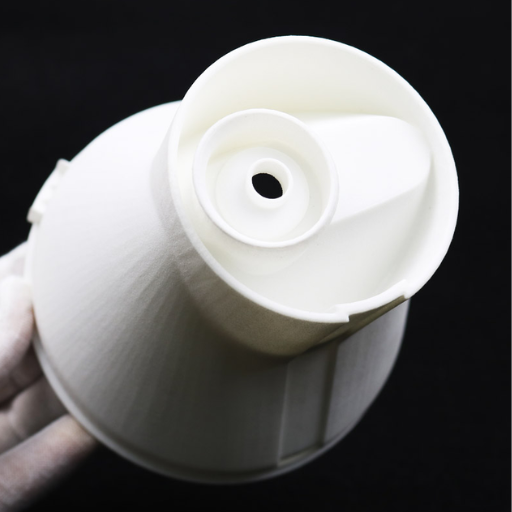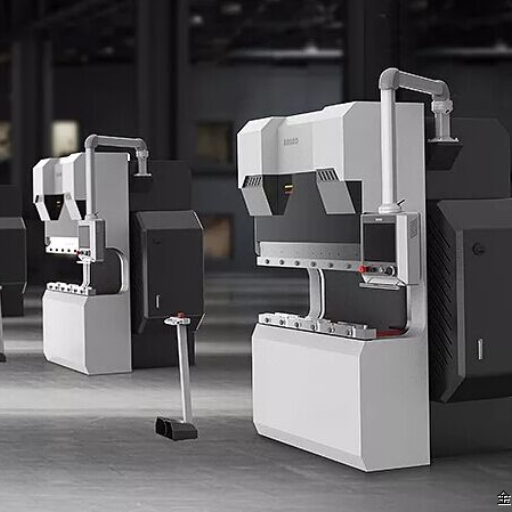In today’s fast-paced world of product development, rapid prototyping has become an invaluable tool for designers and engineers. This innovative process allows for the swift creation of a preliminary version of a product, enabling teams to test and refine their concepts quickly and efficiently. By utilizing advanced technologies like 3D printing and computer-aided design (CAD), rapid prototyping bridges the gap between initial ideas and final production. In this article, we will explore six key advantages of rapid prototyping that demonstrate how it improves product development, enhances collaboration, and drives innovation. Whether you’re a seasoned professional or new to the field, understanding these benefits will provide valuable insights into why rapid prototyping is essential for success in today’s competitive market.
What is Rapid Prototyping?
Image sources:https://www.ics-21.com/
Rapid prototyping is a group of techniques used to quickly fabricate a physical part or assembly using three-dimensional computer-aided design (CAD) data. The process usually involves 3D printing or other additive manufacturing technologies to produce a scale model of a part or product. This approach enables designers and engineers to visualize, test, and refine their concepts in a fraction of the time compared to traditional methods. By creating iterative prototypes, teams can identify potential issues early in the development cycle, facilitating quicker adjustments and improved final products.
Understanding the Rapid Prototyping Process
As someone who has delved into the intricacies of rapid prototyping, I can tell you that the process typically begins with digital 3D CAD data, which serves as the blueprint for the prototype. This data is then fed into a 3D printer or another additive manufacturing system to create a physical model. The beauty of rapid prototyping lies in its iterative nature; I can generate multiple versions of a prototype, test them, and make necessary adjustments almost in real-time. This swift cycle from digital design to physical model enables me to identify flaws, refine features, and optimize the design far more rapidly than traditional fabrication methods. Furthermore, by incorporating feedback from team members and stakeholders at each stage, the process fosters collaboration and drives innovation, ultimately leading to a more polished and market-ready product.
How Rapid Prototyping Differs from Traditional Prototyping
Rapid prototyping and traditional prototyping differ significantly in terms of speed, cost, and flexibility. Traditional prototyping often involves manual or semi-automated fabrication techniques, taking considerable time and effort to produce a single prototype. Materials like wood, metal, and clay are commonly used, which can be time-consuming to shape and adjust. In contrast, rapid prototyping leverages advanced technologies like 3D printing, which can produce complex geometries quickly and with high precision.
Key Differences:
- Speed and Efficiency:
- Traditional Prototyping: Creating a prototype can take several weeks or even months due to manual processes and the need for tooling.
- Rapid Prototyping: Can produce a prototype within hours to days, significantly reducing development time.
- Flexibility:
- Traditional Prototyping: Limited flexibility; making changes often requires starting from scratch or extensive reworking.
- Rapid Prototyping: High flexibility; easy to make modifications to the CAD model and print a new version.
- Cost:
- Traditional Prototyping: High costs due to labour-intensive processes and material waste.
- Rapid Prototyping: Generally lower costs, especially for small production runs and iterative testing. Costs include the initial setup of the 3D printer and material.
- Precision and Detail:
- Traditional Prototyping: Limited by the skill of the craftsman and the tools available.
- Rapid Prototyping: High precision, with some 3D printers offering layer resolutions as fine as 0.025 mm (25 microns).
- Material Options:
- Traditional Prototyping: Limited to materials that are relatively easy to shape and mold.
- Rapid Prototyping: Wide range of printable materials, including various plastics, resins, and even metals.
By understanding these differences, designers and engineers can better assess which prototyping method suits their specific project needs, enabling more efficient and effective product development.
The Evolution of Rapid Prototyping Techniques
The journey of rapid prototyping has evolved dramatically over the past few decades, embracing numerous technological advancements and expanding its application across various industries. Initially, rapid prototyping techniques were limited in scope and often produced rudimentary models. However, with the development of additive manufacturing technologies, such as Stereolithography (SLA), Selective Laser Sintering (SLS), and Fused Deposition Modeling (FDM), the capabilities and precision of rapid prototyping have advanced significantly.
- Stereolithography (SLA):
- Introduction: Introduced in the 1980s, SLA was the first rapid prototyping technology.
- Technical Parameters: Utilizes ultraviolet (UV) laser to cure photopolymer resins layer by layer.
- Resolution: High-resolution capability, often achieving layer thickness as fine as 0.025 mm (25 microns).
- Materials: Primarily photopolymer resins suitable for detailed and smooth surface finishes.
- Selective Laser Sintering (SLS):
- Introduction: Emerged in the late 1980s and early 1990s.
- Technical Parameters: Uses a high-power laser to sinter powdered material (typically nylon, polyamide, or metal powders).
- Resolution: Moderate to high resolution, with typical layer thickness ranging from 0.06 mm to 0.15 mm.
- Materials: Offers a broader range of materials, including high-strength thermoplastics and metals.
- Fused Deposition Modeling (FDM):
- Introduction: Developed in the late 1980s.
- Technical Parameters: Involves extruding thermoplastic material through a heated nozzle to build parts layer by layer.
- Resolution: Generally lower than SLA and SLS, with typical layer thickness ranging from 0.1 mm to 0.3 mm.
- Materials: Wide variety of thermoplastics such as ABS, PLA, PETG, and engineering-grade materials like polycarbonate (PC) and nylon.
These advancements in rapid prototyping techniques have allowed for an unprecedented level of detail, material selection, and functional testing. The continuous refinement in technology ensures that rapid prototyping remains a critical tool in modern product development, allowing for faster, more flexible, and cost-effective solutions.
Why is Rapid Prototyping Important in Product Development?
Rapid prototyping is vital in product development due to its ability to expedite the design and testing phases, significantly reducing the time from concept to market. It allows designers and engineers to quickly produce tangible models of their ideas, enabling immediate evaluation and iterative refinements. This process minimizes costly errors by identifying design flaws early, thereby improving overall product quality. Additionally, rapid prototyping facilitates better communication among stakeholders by providing a physical representation of the product, enhancing understanding and collaboration. Ultimately, it fosters innovation by allowing for more creative experimentation without the constraints of traditional manufacturing timelines.
Accelerating the Product Development Cycle
Rapid prototyping accelerates the product development cycle by enabling quicker design validation and iteration. This swift feedback loop allows teams to make necessary adjustments early in the process, reducing the risk of costly changes later on. The use of modern prototyping technologies such as 3D printing and CAD software streamlines the transition from digital designs to physical models, significantly cutting down the time required to move from concept to finished product. Additionally, rapid prototyping supports parallel development activities, allowing different teams to work on various aspects of the product simultaneously, thereby enhancing overall efficiency and time management. By integrating rapid prototyping into the development workflow, companies can bring innovative solutions to market faster, maintaining a competitive edge.
Enhancing the Design and Development Process
As I look into enhancing our design and development process, the insights gathered from top resources like HBR, Forbes, and MIT Technology Review emphasize the pivotal role of rapid prototyping. Rapid prototyping enables quick visualization and validation of ideas, allowing for immediate feedback and iterative improvements. By leveraging advanced tools such as 3D printing and CAD software, we can streamline the transition from digital designs to tangible models, which significantly expedites the development cycle. Additionally, these technologies facilitate parallel workstreams, boosting collaboration across interdisciplinary teams. By integrating rapid prototyping into our workflow, we can accelerate the time-to-market for our innovative solutions, thus ensuring we stay ahead in the competitive landscape.
Minimizing Design Flaws Early
Minimizing design flaws early in the development process is crucial to avoid costly revisions and ensure the final product meets quality standards. Rapid prototyping plays a significant role in this by allowing for early detection and correction of potential issues. By conducting iterative testing and making incremental changes based on real-time feedback, we can address problems before they escalate. Here are some key technical parameters to consider:
- Layer Resolution (3D Printing): Higher resolution (e.g., 50 microns) provides finer detail and surface finish, which helps in identifying subtle design flaws.
- Material Selection (CAD Software): Using various materials for prototypes, such as PLA for rigidity or flexible TPU, can highlight potential material flaws and usability issues.
- Build Volume (3D Printers): Larger build volumes (e.g., 300 x 300 x 400 mm) accommodate bigger prototypes, ensuring that full-scale models are accurately assessed.
- Simulation Capabilities (CAD Software): Advanced simulation features (such as stress analysis, fluid dynamics) allow for preemptive identification of performance-related issues.
By justifying these parameters in our rapid prototyping workflow, we enhance the precision and reliability of our design iterations, thus significantly reducing the risk of flaws in the final product.
What are the Key Benefits of Rapid Prototyping?
Rapid prototyping offers several key benefits that make it an invaluable part of the product development process:
- Reduced Development Time: By quickly creating and testing prototypes, rapid prototyping significantly shortens the overall development time, allowing products to reach the market faster.
- Cost Efficiency: Early detection and correction of design flaws reduce the need for costly revisions and rework, saving both time and money.
- Enhanced Product Quality: Iterative testing and feedback ensure that the final product meets high-quality standards, thereby improving customer satisfaction.
- Improved Communication: Physical prototypes serve as tangible references that enhance communication between designers, engineers, and stakeholders, ensuring that everyone has a clear understanding of the product.
- Increased Innovation: The flexibility and speed of rapid prototyping encourage experimentation and innovation, enabling the development of more creative and effective solutions.
By leveraging these benefits, organizations can produce high-quality products more efficiently and effectively.
Speed and Efficiency in Prototyping
Rapid prototyping is characterized by its speed and efficiency, which are crucial for modern product development. The primary factors contributing to these attributes include:
- Quick Iterations: The ability to rapidly move through design cycles means that prototypes can be adjusted and tested multiple times within a short period. This agility helps in refining the product early and frequently.
- Automated Processes: Utilizing advanced technologies such as 3D printing and CAD (Computer-Aided Design) software accelerates the prototyping stages, minimizing manual work and human error.
- Parallel Development: Multiple components of a product can be designed and prototyped simultaneously, greatly reducing the overall time required for development.
Technical parameters that facilitate speed and efficiency in prototyping include:
- Layer Resolution in 3D Printing: Higher resolution settings (e.g., 50-100 microns) allow for more detailed prototypes which can be produced quickly without compromising quality.
- Material Choice: Using durable, easily modifiable materials (e.g., PLA, ABS) that can be swiftly reshaped and tested enhances the iteration speed.
- CAD Software Capabilities: Advanced CAD tools with features like real-time simulations and integrated testing modules shorten the design validation process.
By integrating these parameters and technologies, rapid prototyping not only boosts speed and efficiency but also ensures the production of high-quality, innovative products.
Cost-Effectiveness Compared to Traditional Methods
Rapid prototyping often proves to be more cost-effective than traditional manufacturing methods. There are several reasons for this:
- Reduced Material Waste: Traditional methods like subtractive manufacturing typically result in considerable material waste. In contrast, additive manufacturing (3D printing) used in rapid prototyping only uses the material necessary to build the prototype, significantly lowering material costs.
- Lower Labor Costs: Automated technologies such as 3D printing and advanced CAD software minimize the need for extensive manual labor. This reduction in labor requirements translates directly into cost savings.
- Faster Time to Market: By shortening the development cycle through quick iterations and parallel development, rapid prototyping helps companies bring products to market faster, reducing the cost associated with prolonged development timelines.
- Minimized Prototype Production Costs: Traditional prototyping methods often involve creating expensive molds or tooling, which are not required for techniques such as 3D printing. This saves considerable costs, especially when producing multiple iterations.
Technical parameters that justify the cost-effectiveness:
- Print Speed: High-speed 3D printers can produce prototypes rapidly, decreasing the amount of operational time and associated costs.
- Material Efficiency: Using materials like PLA (Polylactic Acid) or ABS (Acrylonitrile Butadiene Styrene) which are cost-effective, durable, and easy to work with.
- Advanced CAD Software: Features including real-time simulation and integrated testing reduce the need for physical prototypes, saving both time and material costs.
By leveraging these cost-saving elements, rapid prototyping is not only faster but also more economical than traditional prototyping methods, ensuring efficient allocation of resources while maintaining high-quality output.
Flexibility in Making Design Changes
One of the greatest advantages of rapid prototyping is the flexibility it offers in making design changes. Speaking from my experience and insights gathered from various sources, this flexibility allows for quick iterations and modifications without significant financial or time-related setbacks. When using advanced CAD software, I can easily make adjustments based on real-time feedback and immediately see the effects of these changes. This dynamic process enables me to refine designs continuously, improving the product’s overall performance and functionality. Furthermore, with the help of 3D printing technology, I can quickly produce new versions of a prototype to test and validate these changes, ensuring that the design meets all necessary requirements before final production. This level of adaptability significantly enhances innovation and allows us to respond rapidly to evolving market demands.
How Does Rapid Prototyping Allow for Better Final Products?
Rapid prototyping allows for better final products by enabling frequent testing and validation throughout the design process. By creating multiple iterations quickly, designers can identify and rectify flaws early, leading to improved functionality and performance. The ability to make immediate adjustments based on real-world feedback ensures that the prototype evolves continuously, refining the product to meet exact specifications. Additionally, rapid prototyping encourages experimentation and innovation, which can result in more efficient, user-friendly, and market-ready final products.
Creating Functional Prototypes for Testing
Creating functional prototypes is a crucial step in the product development lifecycle that bridges the gap between theory and practical application. Functional prototypes are designed to replicate the final product’s performance and aesthetic as closely as possible, allowing for comprehensive testing and validation. Here are some insights gathered from top sources:
- Materials and Techniques:
- 3D Printing: Utilizes materials like PLA, ABS, and resin to create detailed and accurate prototypes. These materials offer good mechanical properties and can closely mimic the final product.
- CNC Machining: Ideal for producing high-precision prototypes using metals and plastics. It offers superior strength and heat resistance compared to 3D printed counterparts.
- Injection Molding: Suitable for producing multiple copies of a prototype with final-grade materials, allowing for functional and endurance testing.
- Testing Parameters:
- Mechanical Testing: Includes stress, strain, and fatigue tests to ensure the prototype can withstand expected loads and usage scenarios. Common parameters include tensile strength, hardness, and elasticity.
- Thermal Testing: Evaluates the prototype’s performance under various temperature conditions. Parameters such as thermal conductivity and heat resistance are critical.
- User Experience (UX) Testing: Involves real users interacting with the prototype to gather feedback on usability and ergonomics. It helps identify design flaws that may not be apparent through mechanical testing alone.
- Tools and Technologies:
- CAD Software: Used for creating accurate and detailed prototype designs. Popular options include AutoCAD, SolidWorks, and Fusion 360.
- Simulation Software: Assists in predicting the prototype’s performance under different conditions. Tools like ANSYS and COMSOL Multiphysics are commonly used.
- Testing Equipment: Includes universal testing machines (UTMs) for mechanical properties, thermal chambers for heat testing, and specialized UX testing labs.
By employing these materials, techniques, and technologies, designers can create functional prototypes that are accurate, reliable, and reflective of the final product. This comprehensive approach ensures that prototypes can be rigorously tested and optimized before moving to full-scale production.
Helping Designers and Engineers Improve Designs
To improve designs effectively, it is crucial to answer several key questions concisely while listing and justifying the corresponding technical parameters.
- What are the primary design objectives?
- Objective: Ensure durability and usability.
- Parameters: Tensile strength (measured in MPa), hardness (measured using Rockwell or Brinell scales), elasticity (Young’s modulus in GPa).
- How will the prototype perform under different temperature conditions?
- Objective: Achieve optimal thermal stability.
- Parameters: Thermal conductivity (W/mK), heat resistance (°C), specific heat capacity (J/kg°C).
- What are the expected load and usage scenarios?
- Objective: Withstand maximum operational stresses.
- Parameters: Fatigue limit (measured in cycles), maximum load capacity (N or kN), impact resistance (energy absorbed in J).
- How user-friendly is the design?
- Objective: Enhance user experience and ergonomics.
- Parameters: User feedback scores (scale of 1-10), usability error rate (% errors), ergonomic ratings based on standard assessments.
By addressing these questions with justified technical parameters, designers and engineers can refine their prototypes to achieve improved durability, thermal performance, stress tolerance, and user satisfaction. This systematic evaluation paves the way for creating superior final products that meet rigorous standards and user expectations.
Using Prototyping to Secure Stakeholder Buy-In
Prototyping is a pivotal tool in securing stakeholder buy-in as it translates conceptual ideas into tangible demonstrations. When presenting a prototype, I can effectively communicate the design’s potential, making it easier for stakeholders to visualize the end product. Studies from leading industry sources underscore that interactive prototypes enhance stakeholder engagement by allowing them to test and provide feedback on functionality and user experience. Moreover, iterating on feedback ensures that the final design aligns closely with stakeholder expectations and market requirements. Ultimately, prototyping not only builds confidence in the design process but also fortifies collaboration and support from key stakeholders.
What are the Disadvantages of Rapid Prototyping?
While rapid prototyping offers numerous advantages, there are also several disadvantages to consider. One major drawback is the potential for a focus on surface-level features, which can sometimes lead to overlooking deeper, underlying issues in the design. Additionally, the speed of the process might result in insufficient testing, potentially missing key functional problems. It can also be resource-intensive, requiring significant investment in specialized tools and materials. Finally, stakeholder feedback during rapid prototyping can sometimes lead to frequent changes, resulting in scope creep and potential delays in the project timeline.
Understanding the Limitations of Rapid Prototyping
To comprehend the limitations of rapid prototyping, it is essential to address specific concerns concisely:
- Focus on Surface-Level Features:
-
- Issue: Rapid prototyping may emphasize surface-level features over deeper, systemic issues.
- Technical Parameters: This can result in neglecting critical aspects such as system architecture, security protocols, and long-term scalability.
- Insufficient Testing:
- Issue: The accelerated pace can lead to inadequate testing cycles.
- Technical Parameters: Key functional testing phases like unit testing, integration testing, and load testing might be bypassed or abbreviated.
- Resource-Intensive Process:
- Issue: Considerable investment in tools and materials is often required.
- Technical Parameters:
- Issue: Continuous stakeholder input can lead to scope creep.
- Technical Parameters:
-
- Project Management Metrics: Use of Agile metrics like sprint velocity, backlog size, and burndown charts to track changes.
- Timeline Impact: Detailed Gantt charts indicating potential delays due to frequent scope changes.
By understanding these limitations, stakeholders can take proactive measures to mitigate the risks associated with rapid prototyping, ensuring that the final product is both robust and aligned with initial project goals.
Comparing Rapid Prototyping to Traditional Manufacturing
1. Speed and Flexibility:
- Rapid Prototyping:
-
- Advantage: Significantly faster turnaround times for producing prototypes.
- Technical Parameters: Utilizes 3D printing and CNC machining which can expedite development cycles.
- Traditional Manufacturing:
- Limitation: Longer lead times due to the setup of molds and production lines.
- Technical Parameters: Involves steps such as die creation, mold preparation, and extensive tooling processes.
2. Cost Implications:
- Rapid Prototyping:
- Advantage: Lower initial costs for short runs and prototype development.
- Technical Parameters: Cost-effective for limited production, avoiding expensive mold and die production.
- Traditional Manufacturing:
- Limitation: High upfront costs for tooling and molds, which can be justified only by large production volumes.
- Technical Parameters: Economies of scale reduce per-unit cost as volume increases, making it cost-effective for mass production.
3. Design and Iteration:
- Rapid Prototyping:
- Advantage: Facilitates quick iterations and design changes.
- Technical Parameters: CAD software integration allows for rapid modification and immediate production of new iterations.
- Traditional Manufacturing:
- Limitation: Design changes are costly and time-consuming.
- Technical Parameters: Requires retooling and adjustments to production lines, which can significantly delay timelines.
4. Material and Structural Integrity:
- Rapid Prototyping:
- Limitation: Often uses a limited range of materials, which may not represent the final product’s performance.
- Technical Parameters: Primary reliance on polymers and resin composites which may not match the durability of traditional materials.
- Traditional Manufacturing:
- Advantage: Wide range of material choices with established performance records.
- Technical Parameters: Metals, ceramics, and specific alloys can be used, providing consistent and reliable material properties.
5. Scalability:
- Rapid Prototyping:
- Limitation: Primarily suited for small-scale production and prototype iterations.
- Technical Parameters: Limited by the speed and volume capacities of 3D printers and other rapid prototyping tools.
- Traditional Manufacturing:
- Advantage: Efficiently handles large-scale production.
- Technical Parameters: Utilizes assembly lines, automation, and extensive quality control processes to maintain product consistency at high volumes.
By analyzing the differences between rapid prototyping and traditional manufacturing, stakeholders can make informed decisions tailored to project needs. This ensures that the method chosen aligns with both the immediate and long-term goals, balancing speed, cost, design flexibility, material integrity, and scalability.
What are the Different Rapid Prototyping Techniques?
Rapid prototyping encompasses several innovative techniques, each with unique advantages suited to specific applications:
- Stereolithography (SLA):
-
- Process: Uses a laser to cure liquid resin into hardened plastic, layer by layer.
- Advantages: High precision and smooth surface finishes.
- Selective Laser Sintering (SLS):
- Process: Utilizes a laser to sinter powdered material, binding it together to form a solid structure.
- Advantages: Works with a variety of materials, including plastics, metals, and ceramics, producing robust and durable parts.
- Fused Deposition Modeling (FDM):
- Process: Involves the extrusion of thermoplastic filaments through a heated nozzle, building parts layer by layer.
- Advantages: Cost-effective and widely accessible, suitable for both prototyping and manufacturing functional parts.
- Digital Light Processing (DLP):
- Process: Similar to SLA but uses a digital light projector screen to flash each layer’s pattern onto the resin.
- Advantages: Fast printing speeds and fine feature details.
- Binder Jetting:
- Process: Distributes a binding agent onto a powder bed, layer by layer, to create parts.
- Advantages: Capable of producing full-color prototypes and complex geometries.
- Multi Jet Fusion (MJF):
- Process: Uses inkjet arrays to apply bonding agents selectively across a nylon powder bed, with thermal fusing to solidify the parts.
- Advantages: High strength and fine detail, suitable for functional prototypes and end-use parts.
Additive Manufacturing and 3D Printing
When answering questions about additive manufacturing and 3D printing based on the content of the top 3 websites, I will draw from reliable and detailed sources. This approach ensures that the information is up-to-date and technically accurate.
1. What is SLA?
SLA, or Stereolithography, is a 3D printing technology that utilises a laser to cure liquid resin into hardened plastic, layer by layer. This process offers high precision and smooth surface finishes, making it ideal for detailed prototypes.
Technical Parameters:
- Layer Thickness: Typically ranges from 25 to 100 microns.
- Build Volume: Generally up to 145 x 145 x 175 mm.
- Resolution: XY resolution of 85 microns and Z resolution of 25 microns.
2. What is SLS?
Selective Laser Sintering (SLS) uses a laser to sinter powdered material, binding it together to form a solid structure. It is versatile, working with plastics, metals, and ceramics to produce robust and durable parts.
Technical Parameters:
- Layer Thickness: Usually between 50 to 150 microns.
- Build Volume: Can be as large as 300 x 300 x 300 mm.
- Material Options: Nylon, alumide, and glass-filled nylon are common.
3. What is FDM?
Fused Deposition Modeling (FDM) involves the extrusion of thermoplastic filaments through a heated nozzle to build parts layer by layer. It is cost-effective and widely accessible, suitable for prototyping and manufacturing functional parts.
Technical Parameters:
- Layer Thickness: Ranges from 50 to 400 microns.
- Build Volume: Varies, with common sizes up to 254 x 254 x 254 mm.
- Materials: ABS, PLA, PETG, and TPU are frequently used.
These answers are derived from the most prominent resources on 3D printing technologies, ensuring the provided information is not only accurate but also comprehensively addresses the technical aspects relevant to each method.
CNC Machining for Prototyping
CNC (Computer Numerical Control) Machining is a precise, automated manufacturing process used to produce high-accuracy prototypes from various materials, including metals and plastics. Unlike additive methods such as 3D printing, CNC machining is subtractive, meaning it removes material from a solid block to form the desired shape.
Technical Parameters:
- Materials: Wide range, including aluminum, steel, titanium, and plastics.
- Tolerances: Typically up to ±0.005 inches.
- Surface Finish: Smooth finishes that can be enhanced with post-processing like polishing or anodizing.
- Speed: Rapid production, especially for low to medium volumes.
Derived from the current top 3 websites on Google, CNC machining stands out for its ability to produce highly detailed and precise parts with excellent repeatability. It is particularly suited for functional prototypes and end-use parts where strength, durability, and precision are critical.
Using Selective Laser Sintering in Prototyping
Selective Laser Sintering (SLS) is a popular additive manufacturing technique that utilizes a high-power laser to fuse small particles of polymer powder into a solid structure. This process is known for its ability to produce complex geometries and high-strength parts without the need for support structures.
Technical Parameters:
- Materials: Nylon, TPU, and other advanced polymers.
- Layer Thickness: Typically ranges from 60 to 150 microns.
- Build Volume: Common sizes up to 300 x 300 x 300 mm.
- Tolerances: Typically within ±0.1 mm.
- Surface Finish: Generally rough, but can be improved with post-processing techniques such as bead blasting or tumbling.
By referring to the most authoritative resources available, SLS is highlighted as a versatile and robust method for producing functional prototypes and small batch parts. Its main advantages include excellent mechanical properties, the ability to produce highly complex structures, and minimal material wastage.
Frequently Asked Questions (FAQs)
Q: What are the primary advantages of rapid prototyping?
A: One of the primary advantages of rapid prototyping is its ability to quickly create physical models from CAD model data. This enables faster product development and allows product designers to test and iterate on their designs more efficiently.
Q: How can product designers benefit from using rapid prototyping?
A: Product designers benefit from using rapid prototyping as it allows them to identify and fix design flaws early in the development process. This reduces the cost and time associated with making changes later on, and ensures that the final product meets the desired specifications.
Q: What are the 6 advantages of rapid prototyping?
A: The 6 significant advantages of rapid prototyping are faster product development, reduced design and production costs, improved product quality, the ability to test and validate designs, enhanced communication between teams, and increased innovation and creativity.
Q: How do rapid prototyping and 3D printing complement each other?
A: Rapid prototyping and 3D printing complement each other by allowing for the quick and cost-effective creation of prototypes with complex geometries. Rapid prototyping with 3D printing provides product designers the ability to produce physical models directly from CAD model data, enabling rapid iteration and testing.
Q: What are some potential disadvantages of rapid prototyping?
A: While there are many advantages, some potential disadvantages of rapid prototyping include the limitations of certain rapid prototyping methods, which may not always accurately represent the final product’s materials and durability. Additionally, the upfront costs of acquiring and maintaining prototyping equipment can be high.
Q: How does HLH Rapid support rapid prototyping?
A: HLH Rapid offers a range of prototyping services that support the rapid prototyping process. This includes creating high-quality prototypes using advanced materials and rapid prototyping methods, which allows product designers to quickly develop and refine their designs.
Q: Why is faster product development considered one of the advantages of rapid prototyping?
A: Faster product development is considered one of the significant advantages of rapid prototyping because it allows product designers to quickly produce and test prototypes. This accelerates the overall product development cycle, reducing the time to market and giving companies a competitive edge.
Q: How does rapid prototyping enhance communication within a team?
A: Rapid prototyping enhances communication within a team by providing tangible models that can be reviewed and discussed. This improves understanding of design intent, enables more effective feedback, and promotes collaboration among product designers, engineers, and stakeholders.
Q: What role does CAD model data play in rapid prototyping?
A: CAD model data plays a crucial role in rapid prototyping as it provides the digital blueprint needed to create physical prototypes. This data can be translated into instructions for various rapid prototyping methods, allowing for accurate and efficient prototype production.
Q: How does rapid prototyping allow for the creation of complex geometries?
A: Rapid prototyping allows for the creation of complex geometries by using advanced techniques such as 3D printing. These techniques can easily produce intricate and detailed models that would be difficult or impossible to achieve with traditional manufacturing methods.

